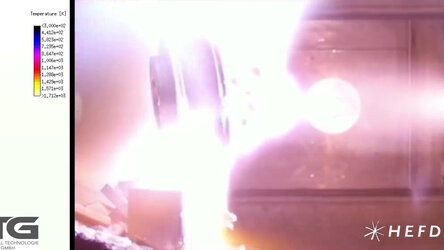Accept all cookies Accept only essential cookies See our Cookie Notice

About ESA
The European Space Agency (ESA) is Europe’s gateway to space. Its mission is to shape the development of Europe’s space capability and ensure that investment in space continues to deliver benefits to the citizens of Europe and the world.
Highlights
ESA - United space in Europe
This is ESA ESA facts Member States & Cooperating States Funding Director General Top management For Member State Delegations European vision European Space Policy ESA & EU Space Councils Responsibility & Sustainability Annual Report Calendar of meetings Corporate newsEstablishments & sites
ESA Headquarters ESA ESTEC ESA ESOC ESA ESRIN ESA EAC ESA ESAC Europe's Spaceport ESA ESEC ESA ECSAT Brussels Office Washington OfficeWorking with ESA
Business with ESA ESA Commercialisation Gateway Law at ESA Careers Cyber resilience at ESA IT at ESA Newsroom Partnerships Merchandising Licence Education Open Space Innovation Platform Integrity and Reporting Administrative Tribunal Health and SafetyMore about ESA
History ESA Historical Archives Exhibitions Publications Art & Culture ESA Merchandise Kids Diversity ESA Brand Centre ESA ChampionsLatest
Space in Member States
Find out more about space activities in our 23 Member States, and understand how ESA works together with their national agencies, institutions and organisations.
Science & Exploration
Exploring our Solar System and unlocking the secrets of the Universe
Go to topicAstronauts
Missions
Juice Euclid Webb Solar Orbiter BepiColombo Gaia ExoMars Cheops Exoplanet missions More missionsActivities
International Space Station Orion service module Gateway Concordia Caves & Pangaea BenefitsLatest
Space Safety
Protecting life and infrastructure on Earth and in orbit
Go to topicAsteroids
Asteroids and Planetary Defence Asteroid danger explained Flyeye telescope: asteroid detection Hera mission: asteroid deflection Near-Earth Object Coordination CentreSpace junk
About space debris Space debris by the numbers Space Environment Report In space refuelling, refurbishing and removingSafety from space
Clean Space ecodesign Zero Debris Technologies Space for Earth Supporting Sustainable DevelopmentApplications
Using space to benefit citizens and meet future challenges on Earth
Go to topicObserving the Earth
Observing the Earth Future EO Copernicus Meteorology Space for our climate Satellite missionsCommercialisation
ESA Commercialisation Gateway Open Space Innovation Platform Business Incubation ESA Space SolutionsEnabling & Support
Making space accessible and developing the technologies for the future
Go to topicBuilding missions
Space Engineering and Technology Test centre Laboratories Concurrent Design Facility Preparing for the future Shaping the Future Discovery and Preparation Advanced Concepts TeamSpace transportation
Space Transportation Ariane Vega Space Rider Future space transportation Boost! Europe's Spaceport Launches from Europe's Spaceport from 2012Latest

Three hours to save Integral – what happened?
Thank you for liking
You have already liked this page, you can only like it once!
Integral uses ‘reaction wheels’ – wheels that store energy as they spin – to subtly control the direction the spacecraft points in without the need of thrusters.
Suddenly, one of these reaction wheels stopped and, because of the law of conservation of energy, that turning force previously in the wheel had to go somewhere else – the entire spacecraft. The spacecraft began to spin, triggering an Emergency Safe Attitude Mode which unfortunately, due to a previous failure, was no longer reliable and did not manage to stabilise the mission.
The reaction wheel was reactivated by teams on the ground, but the spacecraft kept spinning at an average rate of about 17 degrees per minute (roughly one rotation every 21 minutes), as well as wobbling unpredictably about its axes. This may not sound like much, but the spacecraft was rotating at five times its maximum when under control.
“The data coming down from Integral was choppy, coming in for short periods due to it spinning. This made analysis even harder,” explains Richard Southworth, Operations Manager for the mission.
“The batteries were discharging, as there were only short charging periods when the panels briefly faced the Sun.”
The first challenge was to decrease Integral’s energy consumption to buy more time. First estimates of the charge remaining before blackout and the loss of the satellite was just three hours. Step by step, by turning off various instruments and non-critical components, this increased to more than six hours. Next step – stop the spinning.
With support from industry experts, the team at ESOC analysed the state of the reaction wheels, coming up with a series of commands to change their speed and brake the spinning satellite. By late afternoon, the commands were sent and immediately showed success, but another three long hours passed before the satellite was fully under control and out of immediate danger.
-
CREDIT
ESA -
LICENCE
ESA Standard Licence

Galileo infographic: 'Thrusters on top'

Olympus: Back from the dead

Simulating tumbling reaction wheel reentry

Proba Mission Operations Centre















 Germany
Germany
 Austria
Austria
 Belgium
Belgium
 Denmark
Denmark
 Spain
Spain
 Estonia
Estonia
 Finland
Finland
 France
France
 Greece
Greece
 Hungary
Hungary
 Ireland
Ireland
 Italy
Italy
 Luxembourg
Luxembourg
 Norway
Norway
 The Netherlands
The Netherlands
 Poland
Poland
 Portugal
Portugal
 Czechia
Czechia
 Romania
Romania
 United Kingdom
United Kingdom
 Slovenia
Slovenia
 Sweden
Sweden
 Switzerland
Switzerland

























